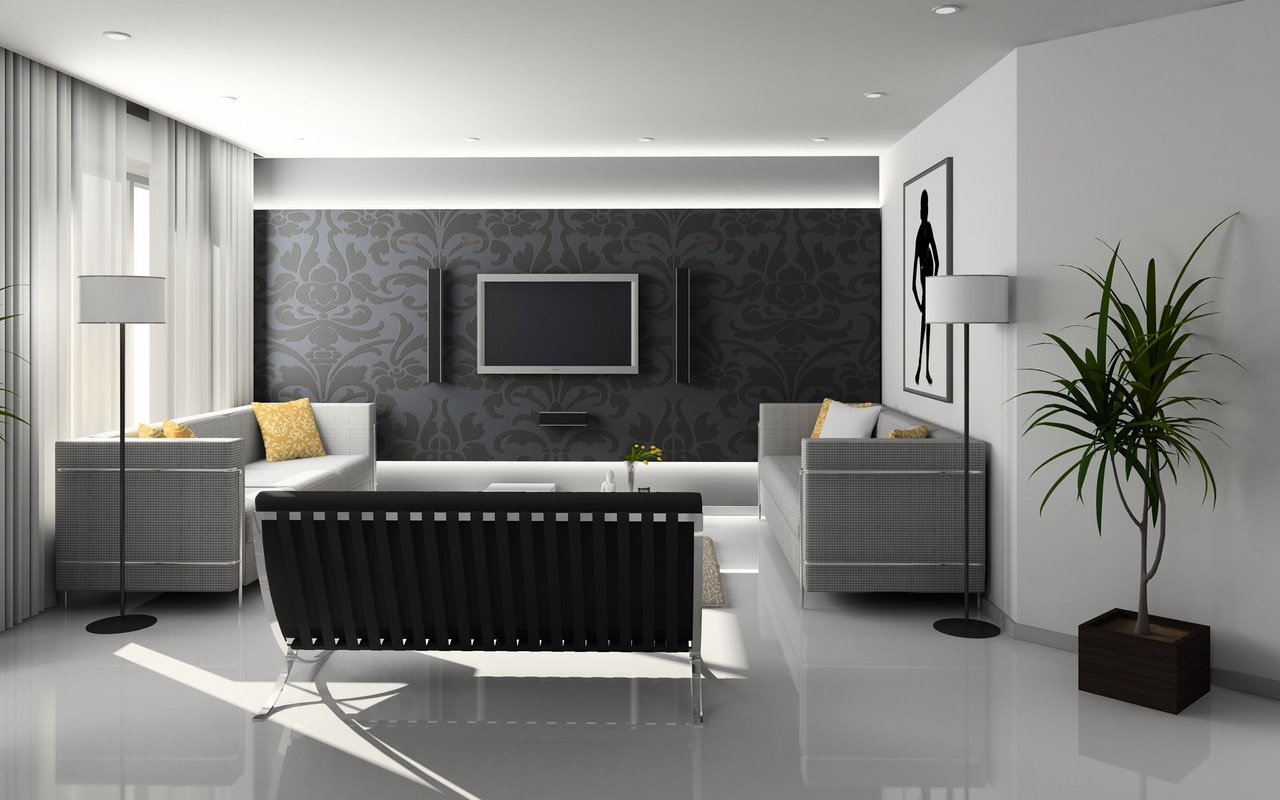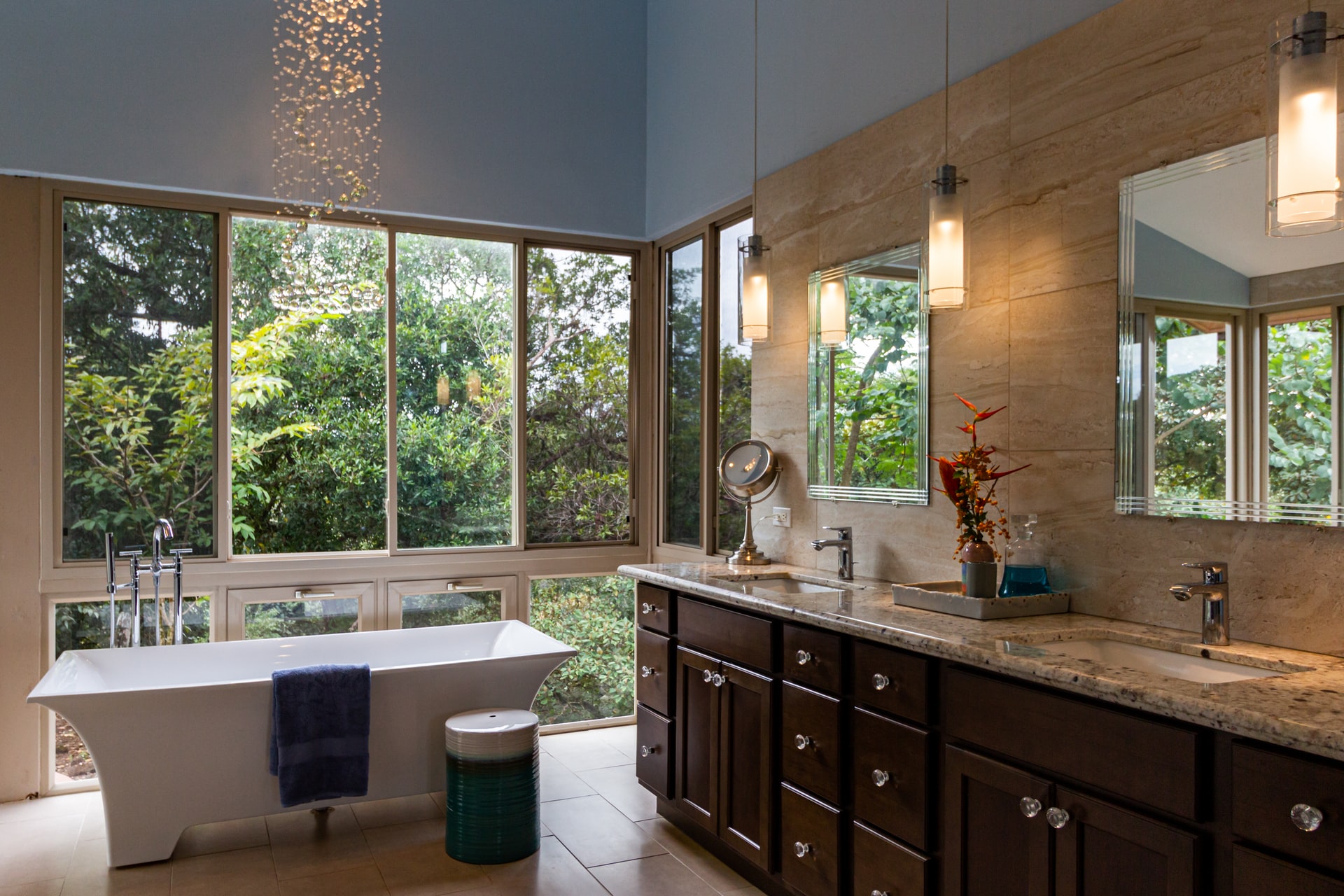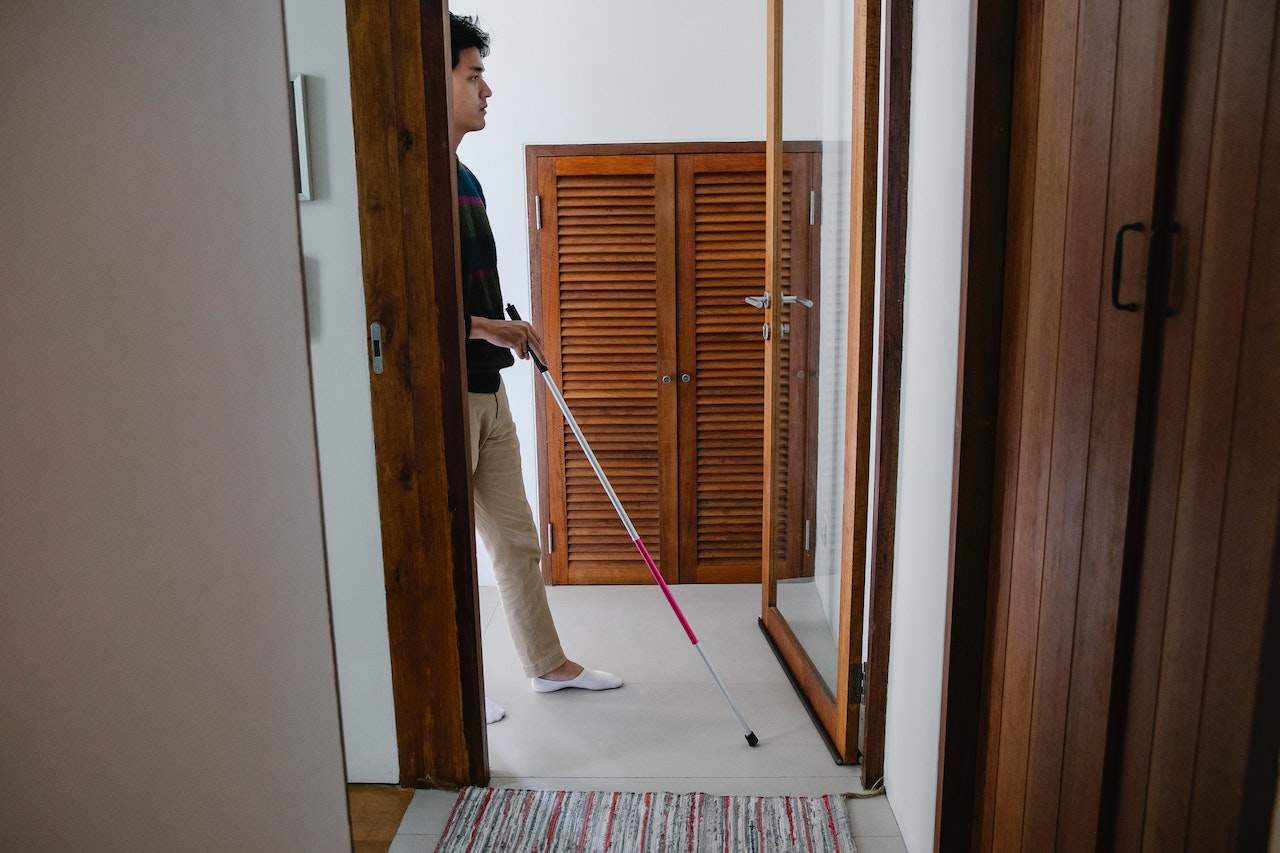When it comes to interior design, there’s an endless array of styles you can incorporate to create the look you want. The minimalist movement is quickly becoming a popular choice for many people who want to declutter their homes and their environment. Even if the concept of minimalism is brand new to you, you can easily apply some simple principles in your own home with a few easy changes. Read on to learn how you can enjoy minimalism in your own space for better clarity and peace of mind.
History of Minimalism

In 1908, an architect named Adolf Loos proposed that sophisticated people preferred plain furniture and less décor rather than the more ornate and colorful Art Nouveau movement of the time. From this concept centering around simplicity in the home, the minimalist movement was born. It wasn’t until the late 1950s to the early 1960s that minimalism became a common interior design theme in the Western world, when the New York-based minimalism art movement propelled it to the forefront of popular culture. The idea quickly took hold in the world of home interior design, and the following decades saw a heavier focus on clean lines, light colors, and a “less is more” mentality that still holds root in minimalism today.
Benefits of a Minimalist Space
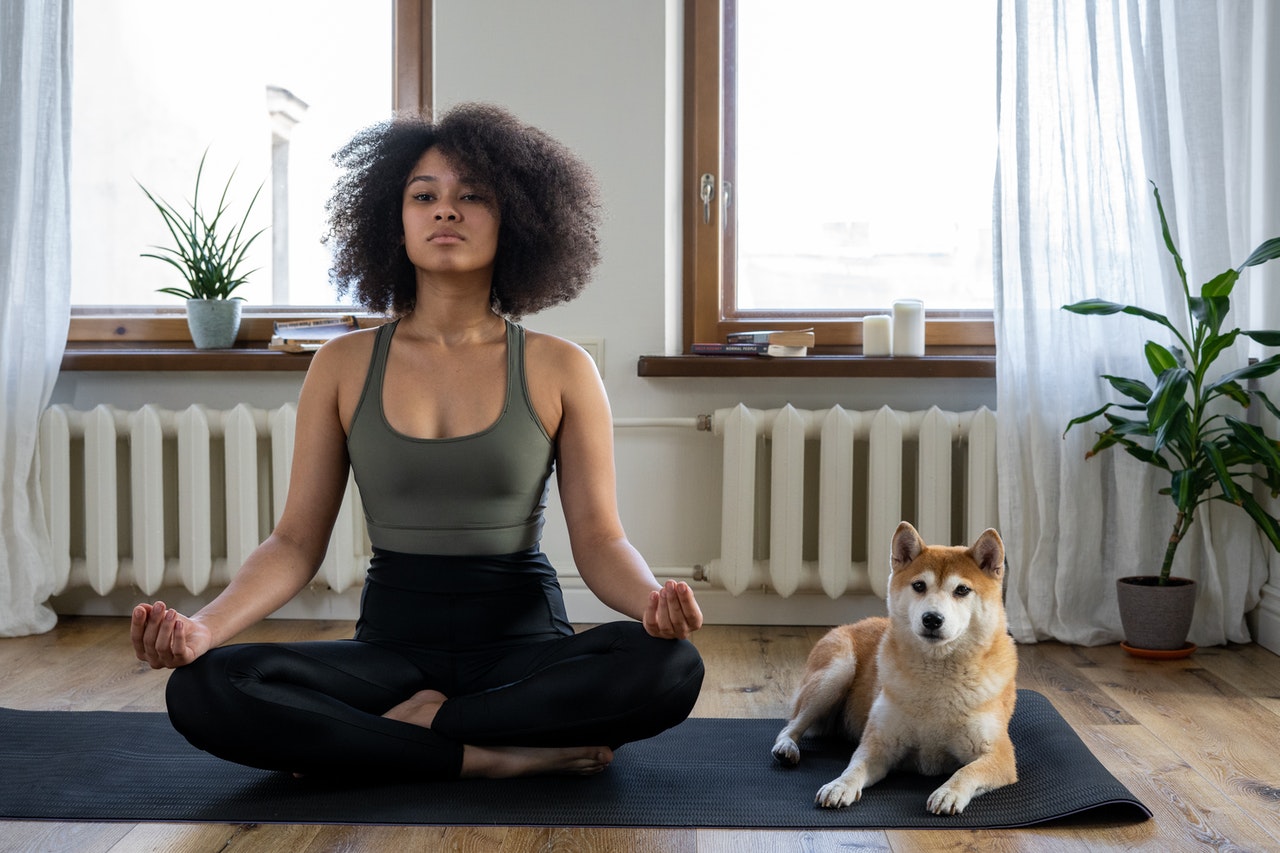
There are many benefits to living in a minimalist home as opposed to a traditional one that’s filled with artwork, furniture, and décor. Adopting the minimalist lifestyle offers a chance to live in a cleaner, more open space, resulting in improved peace of mind. Here are a few benefits to having a minimalist space in your home:
- It reduces stress. When you have a clean and simple environment around you, it reduces stress and anxiety levels. Clutter can lead to feelings of chaos, which can make the symptoms of anxiety worse.
- It makes your life easier. A minimalist home and lifestyle are more practical since you have fewer things just for the sake of having them. Everything (or almost everything) in your home has a purpose, and that makes it easier to find what you need. It’s much easier to keep a minimalist home clean, since there’s less dusting required and less clutter to organize.
- It saves you money. You’ll likely spend less money if you adopt a truly minimalist lifestyle, as you won’t be buying things you don’t truly need. This means you can take what you’d normally spend on stuff and sock it away for a posh vacation or add it to the kids’ college fund.
A simple, clean environment will make it easier to focus more clearly on the things that really matter, and you’ll probably feel far more productive than you do in a cluttered home.
Elements of Minimalist Design
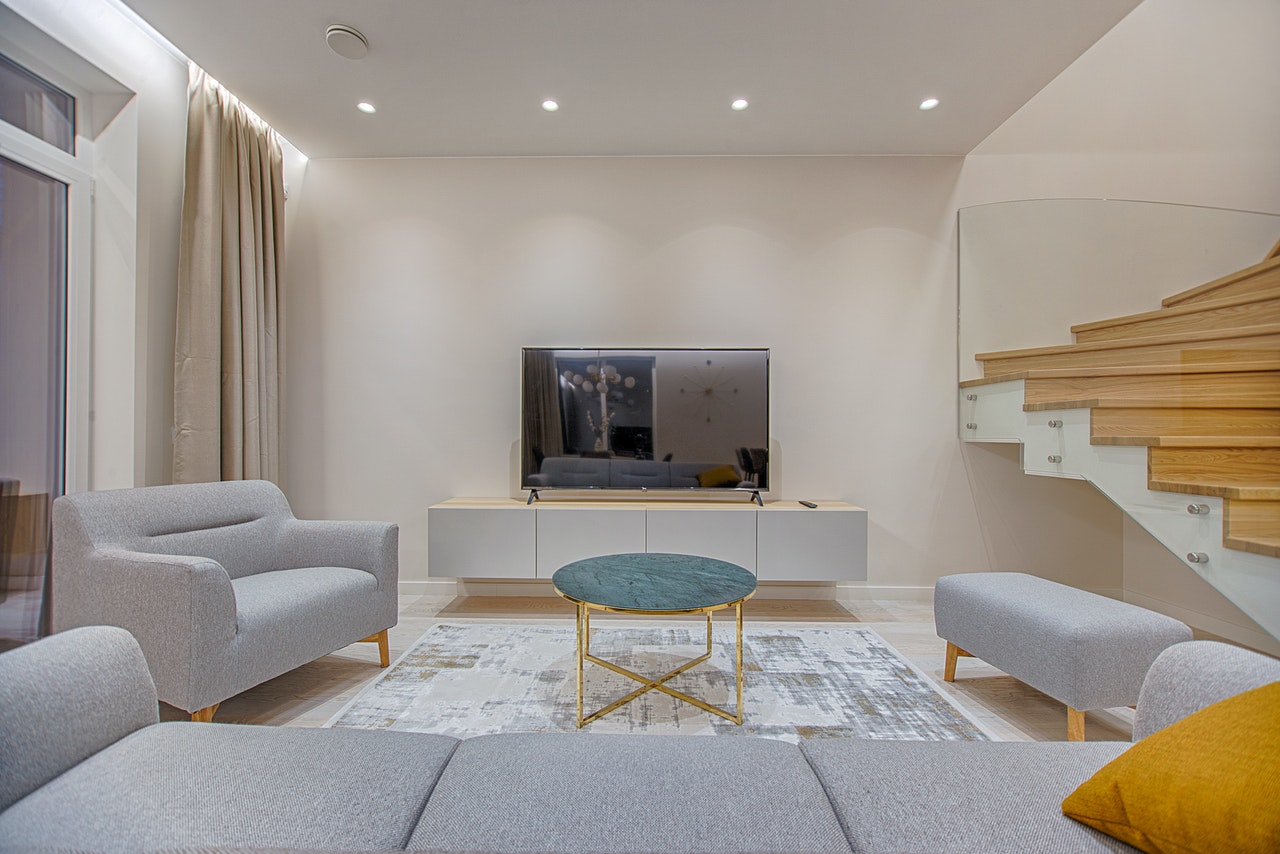
The cornerstone of minimalist design is to maintain simplicity in form and function. By using simple forms and shapes, open floor plans, and modest designs with less clutter, your home will emanate a sense of calmness and peace. Simple wall coverings or finishes offer clean visual appeal by focusing more on textures than patterns or colors. Décor like sculptures or artwork is kept to a minimum to make rooms look and feel larger. Natural light also plays a role in minimalism. Using natural light to focus on clean details, architectural features, and soft colors creates a room with a warm, cozy feeling instead of a cold, sterile aesthetic that many mistakenly associate with minimalism. All of the rooms in a minimalist home will display only necessary objects, creating a more open and airy space and inspiring clearer mental focus. Minimalist floor plans allow for freedom of movement so that the flow of each room is easy to navigate.
Rules of Minimalist Design
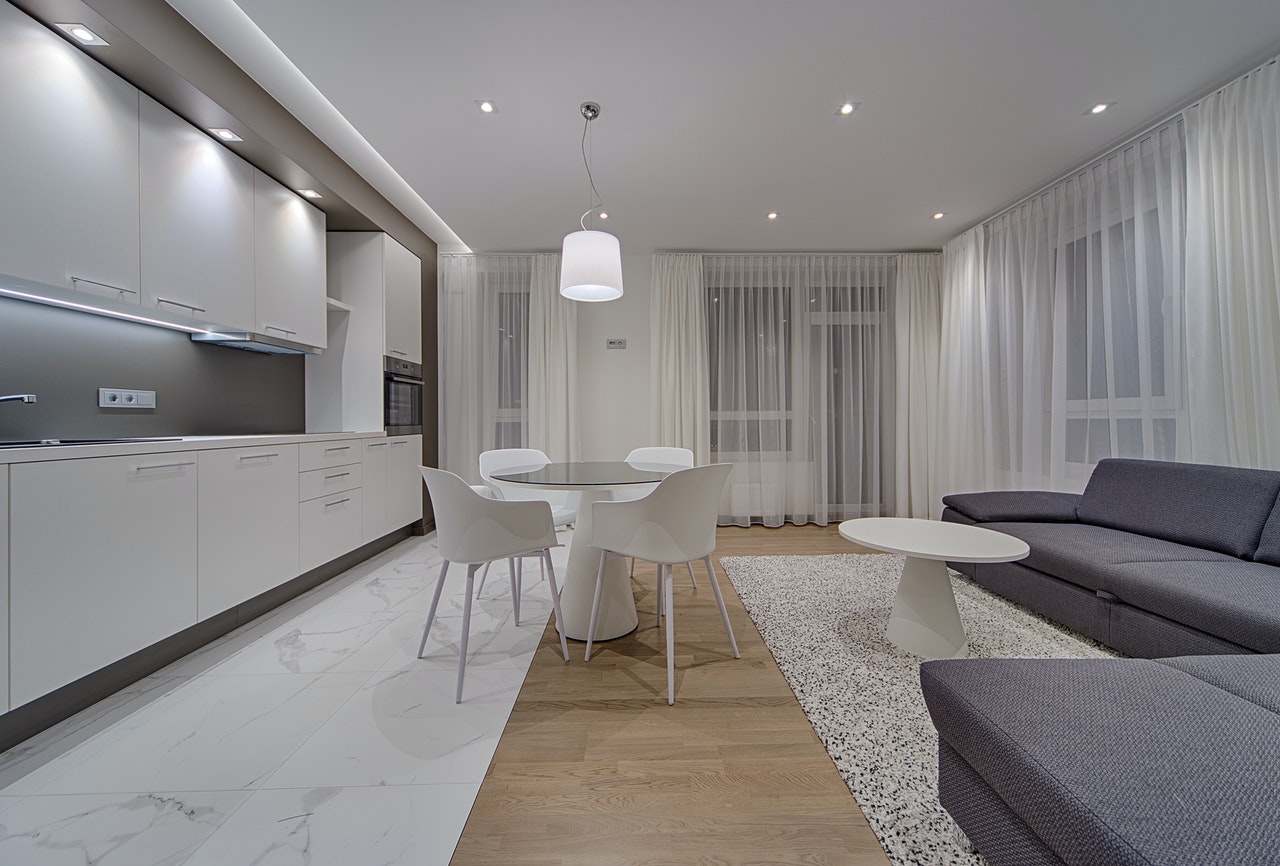
To create a truly minimalist space, you’ll need to follow a few basic rules. If you just want to dip your toes into minimalism to see if it might be right for you, simply lessen the degree to which you follow them:
- Strip the room of excess. Remove everything that doesn’t have a function or value from your rooms. Everything you display in a room should add function and value to that specific space. Keep in mind that art adds function and value to your space, but only display art that you absolutely love. Remove all clutter — if you can’t part with it yet, box it up and put it in the attic.
- Keep it clean and neutral. Avoid bright colors and bold patterns in wall coverings, rugs, and furniture, and opt for basic, neutral options. Ideally, your walls will be a shade of white to optimally reflect light and add to the feeling of openness. If not white, choose a calming, cool color in a light shade. Keep your spaces as monochromatic as possible.
- Decorate with texture and shape. Use shades of a single color and lots of different textures to create depth and warmth in a room. Choose furniture with clean lines — no curvy couches or ornate side tables — and keep the rugs to a single color.
- Let the sun shine in. Utilize natural light — and artificial lights — to make your rooms feel bigger and highlight the variations in texture and shade. Omit window coverings if possible, or cover them with simple, sheer fabric or blinds to keep prying eyes out but light coming through.
Minimalist Color Palette
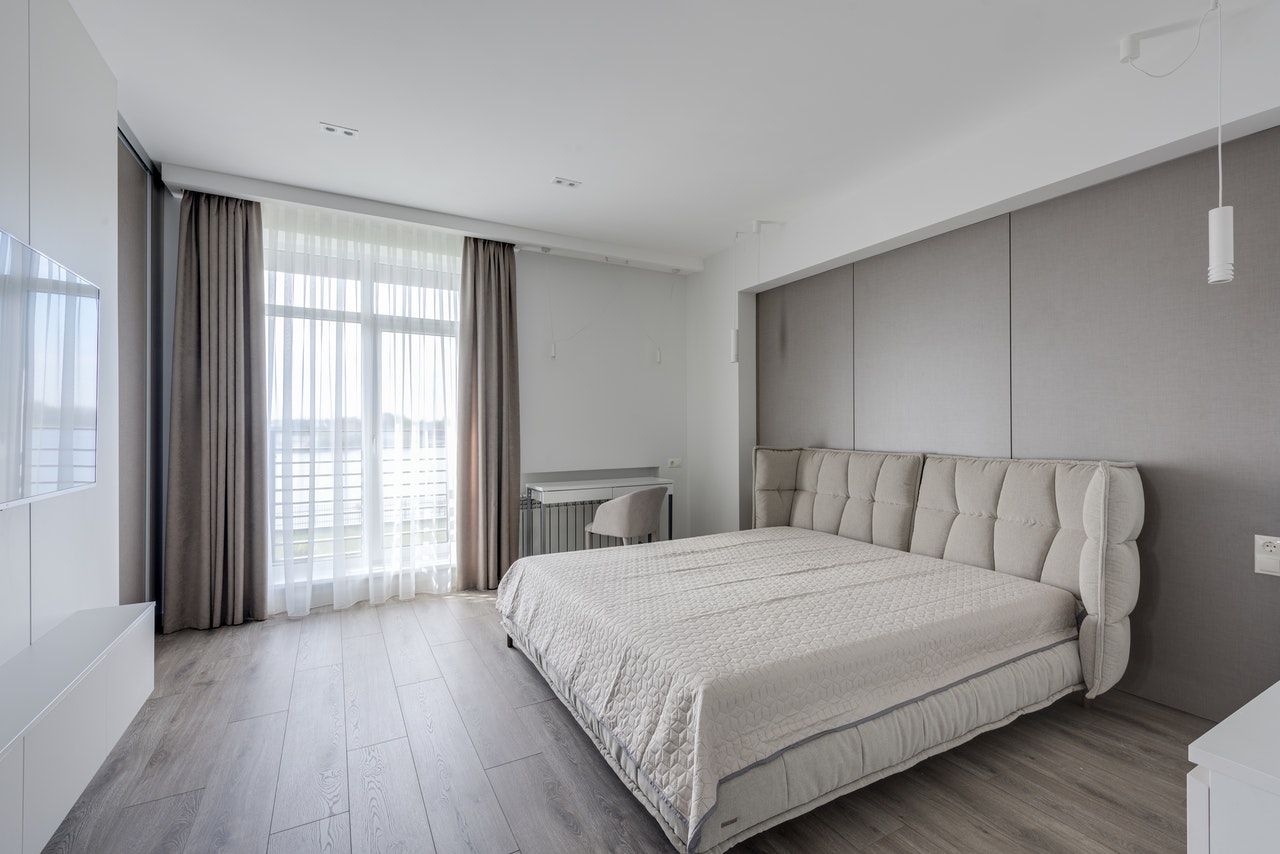
Color plays a significant role in creating a minimalist home. Overall, colors should be light and neutral in tone — not bright or dark. Accents can be darker, such as a rich walnut bench or a small black vase placed on a table. However, the main color palette in a minimalist space is light and airy, leaning more toward shades of white, ivory, or light gray. The idea is to make sure that the colors in the room fade into the background and that they are not the main focus of any given part of the home. Lighter colors allow a room to feel more open and spacious, while darker colors can make the same space feel more closed-in.
The Challenges of Minimalist Design and How to Apply Design Principles to Every Room
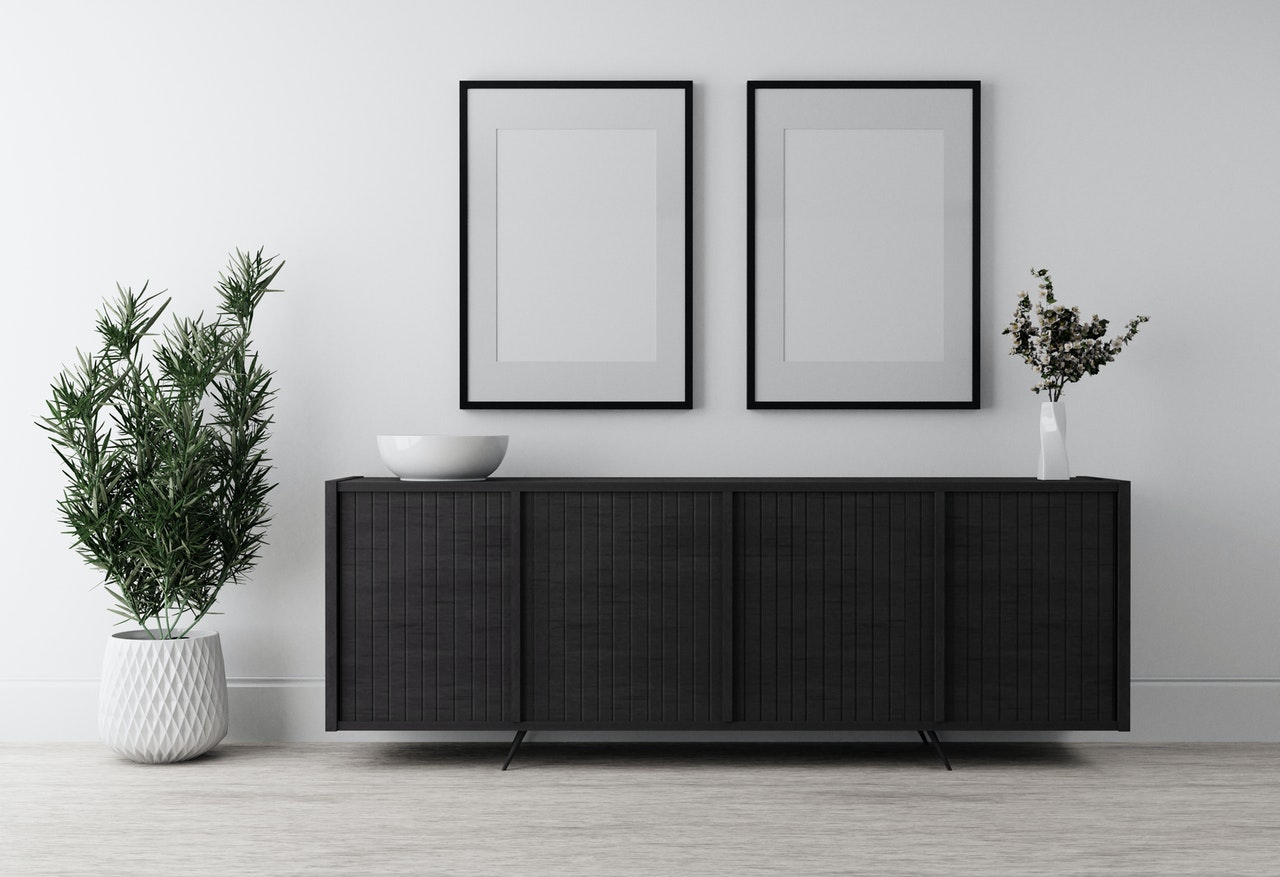
The concept of minimalist design is appealing, but it can also be quite challenging to adopt. Creating a simpler space can be difficult, particularly if you have a penchant for bold colors and lots of art and decoration in your home. One way to overcome the challenge is to begin by purging your home of things you no longer want or need. This process can be cleansing mentally as well as for your physical space. Consider starting in just one room, and gradually work your way to the others. Paint your bedroom a lighter color to give it a try before you change colors in larger spaces, like the living room or kitchen. Use these tips to apply the concepts of minimalism to every room of your home:
- Bedroom. Create a capsule wardrobe, and only keep foundational pieces or clothing — store them neatly in a closet or wardrobe. Avoid displaying photos and books in the bedroom, and keep dressers and nightstands clear of clutter. Use light-colored bedding, window treatments, and area rugs to make the bedroom feel calmer and more open. Only place bedding (pillows, blankets) on the bed that you use, and remove anything that serves only as décor. Store shoes inside your closet or a nice storage bench at the foot of your bed.
- Living Room. Clean up your living room, and remove anything you no longer use or need. Focus on the furniture design in this room, sticking with pieces that are simple in form, comfortable, and neutral in color. Stay away from too much home decoration like framed photos and collectibles. Display only key pieces of art in the living room, and avoid layering throw pillows and blankets on sofas and chairs. Leave at least one wall blank for balance. Use modern curtains to allow natural light to enter this space.
- Bathroom. Put away toiletries and cosmetics instead of storing them on the counter. Replace “busy” bathroom rugs and shower curtains with something simple in a solid, neutral color. Install lighting that makes the room brighter so it feels more open.
- Kitchen. Clean off your countertops, and store food and small cooking tools in drawers or the pantry. Remove small appliances from countertops, and only take them out when you plan to use them. Get rid of any duplicate items, like measuring cups and your robust collection of spatulas. Spend your money on high-quality items that will last to avoid having to buy duplicates of things. Remove magnets from the fridge so it looks cleaner, and don’t use your kitchen counters as a place to display pictures and knick-knacks.
- Kids’ rooms. You may wonder if it’s even possible to adopt a minimalist design in your child’s room, but it can be done with some ingenuity. Replace colorful rugs and bedding with something in a lighter hue and a solid color to make their room look calmer and more spacious. Encourage your kids to keep their favorite toys stored in a trunk or chest when they’re not using them. Periodically, have your child purge older books and toys that they can donate or sell at a yard sale. If your child refuses to part with their things, safely pack away items you know they don’t play with while they’re not looking. If they notice, you can retrieve it. But chances are, not only will they not notice, but they’ll also be more likely to play with and enjoy the things that stay.
- Home Office: Get rid of old paperwork that you no longer need. File the rest away in a desk drawer or file cabinet. Scan documents you want to keep, and store them on your computer rather than on paper, which is the main cause of clutter in an office. Remove bookshelves unless you absolutely need them for your work. Only keep the office supplies you need, and avoid buying them in bulk. Go with a sleek writing desk rather than a large wooden one that can make your office feel closed-in.
- Outdoors. Even your backyard or garden area can be a minimalist space with some easy changes. Say goodbye to pool toys and broken garden tools — clean up the yard so it’s open and free of junk and debris. Use one or more simple bistro sets for outdoor seating rather than a large table with overstuffed, upholstered chairs. Replace your festive, colorful umbrella or bright shade sails with a version in soft gray or tan. Clean up the landscaping, and plant trees and shrubs around the border of your yard, leaving the center space free and open.
With the right colors and designs in place, you can apply the minimalist concept to your own home. Remember to clear the clutter from each room first, then make the changes in color and decor to align with the minimalist style. With some mindfulness and a bit of practice, you can transform your entire home into a peaceful, relaxing space where everything serves a purpose and clutter is a thing of the past.
Rightsizing for a Minimalist Lifestyle
As you embark on your minimalist journey, it’s crucial to incorporate the concept of “rightsizing” into your lifestyle. Rightsizing involves not only decluttering physical spaces but also aligning various aspects of your life with your core values and priorities. By consciously choosing what truly matters to you, you can create a life that is balanced, purposeful, and aligned with your vision.
Evaluate Your Commitments
Rightsizing extends beyond material possessions to encompass your commitments, including work, relationships, and social activities. Reflect on your professional and personal engagements. Are they in harmony with your minimalist goals? Assess whether certain commitments can be adjusted or let go to create more space for meaningful experiences.
Streamline Your Digital Presence
Digital clutter can be just as overwhelming as physical clutter. Take a closer look at your online activities, including social media usage and email subscriptions. Unfollow or unfriend those who don’t contribute positively to your life, and consider a digital detox to reclaim precious time for in-the-moment presence.
Finances in Harmony
Rightsizing your financial life involves simplifying money matters to reduce stress. Explore online banking options, set up automatic payments, and streamline your budget. This not only frees up time spent on financial chores but also aligns with the minimalist principle of focusing on essentials.
Prioritize “Me Time”
In the quest for minimalism, it’s essential to prioritize self-care. Allocate dedicated time for activities that rejuvenate and center you. Whether it’s meditation, yoga, reading, or a relaxing bath, investing in yourself contributes to a balanced and fulfilling life.
Embrace Transformative Change
Rightsizing is not a one-time event but an ongoing process of aligning your life with your values. Embrace the transformative change that comes with letting go of what no longer serves you. As you continually assess and adjust, you’ll find greater clarity, simplicity, and purpose in your minimalist journey.
Maintain Mindfulness and Gratitude
Remaining mindful and grateful is key to sustaining a minimalist lifestyle. Regularly revisit your vision and express gratitude for the positive changes in your life. Cultivating mindfulness allows you to stay attuned to your priorities and resist the allure of unnecessary distractions.
Incorporating rightsizing into your minimalist lifestyle empowers you to live authentically, focusing on what brings true joy and fulfillment. As you navigate the path of simplicity, remember that it’s not about deprivation but about creating a life rich in purpose and meaning.
